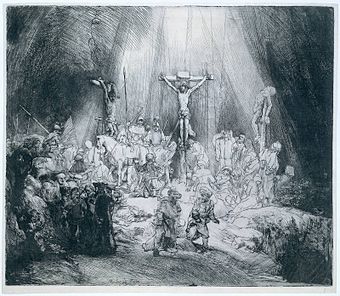This article includes a list of general references, but it lacks sufficient corresponding inline citations. (April 2020) |


In printmaking, a state is a different form of a print, caused by a deliberate and permanent change to a matrix such as a copper plate (for engravings etc.) or woodblock (for woodcut).
Artists often take prints from a plate (or block, etc.) and then do further work on the plate before printing more impressions (copies). Sometimes two states may be printed on the same day, sometimes several years may elapse between them.
States are usually numbered in Roman numerals: I, II, III ..., and often as e.g.: "I/III", to indicate the first of three recorded states. Some recent scholars refine the work of their predecessors, without wishing to create a confusing new numbering, by identifying states such as "IIa", "IVb" and so forth. A print with no different states known is catalogued as "only state".
Most authorities do not count accidental damage to a plate – usually scratches on a metal plate or cracks in a woodcut block – as constituting different states, partly because scratches can disappear again after being printed a number of times.[2]
- ^ Christopher White, "The Late Etchings of Rembrandt", 1969, British Museum/Lund Humphries, London
- ^ Prints and Printmaking, Antony Griffiths, p, British Museum Press (in UK),2nd edn, 1996 ISBN 0-7141-2608-X
© MMXXIII Rich X Search. We shall prevail. All rights reserved. Rich X Search
